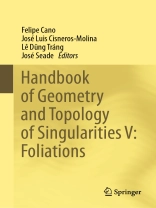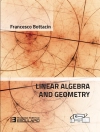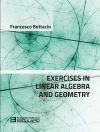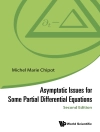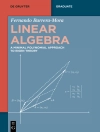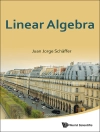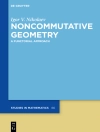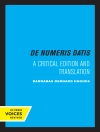This is the fifth volume of the Handbook of Geometry and Topology of Singularities, a series which aims to provide an accessible account of the state-of-the-art of the subject, its frontiers, and its interactions with other areas of research. Singularities are ubiquitous in mathematics and science in general, and singularity theory is a crucible where different types of mathematical problems converge, surprising connections are born and simple questions lead to ideas which resonate in other parts of the subject, and in other subjects.
This Volume V focuses on singular holomorphic foliations, which is a multidisciplinary field and a whole area of mathematics in itself. Singular foliations arise, for instance, by considering:
These important examples highlight the deep connections between foliations and singularity theory. This volume, like its companion Volume VI, also focused on foliations, consists of nine chapters, authored by world experts, which provide in-depth and reader-friendly introductions to some of the foundational aspects of the theory. These introductions also give insights into important lines of further research. The volume starts with a foreword by one of the current world leaders in the theory of complex foliations.
The book is addressed to graduate students and newcomers to the theory, as well as to specialists who can use it as a guidebook.
İçerik tablosu
1 Bruno Scárdua, Holomorphic foliations: singularities and local geometric aspects.- 2 Yu. Ilyashenko, Persistence, uniformizanion and holonomy.- 3 Laura Ortiz-Bobadilla, Ernesto Rosales-González and Sergei Voronin, Holomorphic foliations and vector fields with degenerated singularity in (C2, 0).- 4 David Marín, Jean-Francois Mattei and Eliane Salem, Topology of singular foliation germs in C2.- 5 Nuria Corral, Jacobian and polar curves of singular foliations.- 6 Dmitry Novikov and Sergei Yakovenko, Rolle models in the Real and Complex world.- 7 Fernando Sanz Sánchez, Half a century with the problem of the gradient of an analytic function.- 8 Jose Manuel Aroca, Newton Polygon.- 9 Jorge Vitório Pereira, Closed meromorphic 1-forms.
Yazar hakkında
Felipe Cano Torres (Ph D Universidad de Valladolid, Spain, 1983) is a researcher at Universidad de Valladolid. His research is on holomorphic foliations, particularly on reduction of singularities and applications to dynamical systems. Director of research of several international networks with European fundings. Co-founder and current subdirector of the CTRI, a center in Tordesillas, Spain, focusing on the relations between the University of Valladolid and Iberoamerica.
José Luis Cisneros-Molina (Ph D, University of Warwick 1999) is a researcher at the Mathematics Institute of the National Autonomous University of Mexico. His research interests are in Algebraic and Differential Topology, Differential Geometry and Singularity Theory, with a particular focus on generalizations of Milnor Fibrations for complex and real analytic maps.
Lê Dũng Tráng (Ph D, University of Paris 1969) is an Emeritus Professor at Aix-Marseille University. Previously he was Professor at the Universities of Paris VII (1975-1999) and Marseille, and was head of Mathematics at the ICTP at Trieste. One of the founders of modern Singularity Theory, he has made numerous contributions to morsification, the topology of complex singularities, polar varieties, and carousels, among other topics.
José Seade (DPhil, University of Oxford 1980) is a researcher at the Mathematics Institute of the National Autonomous University of Mexico. His research is in the theory of indices of vector fields and Chern classes for singular varieties, with applications to foliations, and Milnor’s fibration theorem for analytic maps. He was awarded the 2021 Solomon Lefschetz Medal by the Mathematical Council of the Americas. He is currently President of the Mexican Academy of Sciences.
